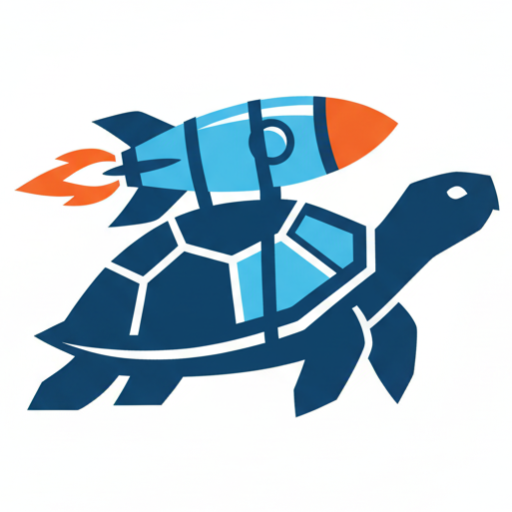Technology has become an essential force in modern work, shaping how individuals and businesses operate. From automation to artificial intelligence, advancements in technology streamline tasks, improve efficiency, and enhance collaboration. However, with so many tools available, knowing how to leverage technology effectively is crucial for maximizing productivity.
In this article, we explore how different technological innovations contribute to productivity and how to use them to optimize work efficiency without becoming overwhelmed by digital distractions.

1. Automation: Reducing Repetitive Tasks
Work Applications: Workflow automation, task management, email handling
One of the most significant advantages of technology is automation. Many productivity-killing tasks involve repetitive manual input, from scheduling meetings to data entry. With the right tools, these tasks can be automated, freeing up time for more strategic work.
- Tools like Zapier and Make integrate different apps, automating data transfer and notifications.
- Email automation tools help manage follow-ups, reducing the need for manual responses.
- Task management platforms like Notion, Trello, and Asana streamline project tracking.
By automating these small but time-consuming processes, professionals can focus on tasks that require critical thinking and decision-making, ultimately leading to greater efficiency and work satisfaction.
Real-World Example
I used to spend hours manually organizing content calendars and assigning tasks. After integrating automation tools, I reduced administrative workload and focused on strategic planning, significantly improving productivity.
2. Artificial Intelligence: Smart Assistance in Daily Work
Work Applications: AI-powered writing, data analysis, decision-making support
Artificial intelligence has transformed productivity by assisting with decision-making, automating writing, and analyzing large datasets. AI-powered tools help professionals streamline processes and focus on higher-value tasks.
- AI writing assistants like ChatGPT, Grammarly, and Jasper improve content creation efficiency.
- AI-powered analytics tools process vast amounts of data, offering insights in minutes.
- Virtual assistants like Google Assistant and Siri help manage reminders, schedules, and quick queries.
Additionally, AI-driven project management tools can analyze deadlines and workload distribution, ensuring optimal task allocation.
Real-World Example
Using AI-powered writing tools has saved hours of proofreading and brainstorming, enabling faster content production while maintaining high quality. In one case, an editorial team reduced editing time by 40% by integrating AI-assisted review tools into their workflow.
3. Cloud Collaboration: Working Seamlessly Across Teams
Work Applications: Remote work, document sharing, real-time collaboration
The rise of cloud computing has revolutionized the way teams collaborate, making it easier to work remotely and share resources in real time.
- Google Workspace and Microsoft 365 enable seamless document sharing and editing.
- Cloud storage solutions like Dropbox and OneDrive provide instant access to files from any device.
- Communication platforms like Slack and Microsoft Teams facilitate instant collaboration.
With cloud collaboration, teams can eliminate unnecessary email exchanges, prevent version control issues, and maintain transparency in workflow progress.
Real-World Example
A distributed team I worked with struggled with document version control. After shifting to a cloud-based document collaboration system, we eliminated confusion, reduced duplicate work, and improved workflow efficiency.
4. Focus and Distraction Management: Using Technology to Stay Productive
Work Applications: Time tracking, focus-enhancing tools, notification management
While technology can boost productivity, it can also create distractions. Managing notifications and screen time is key to staying focused.
- Pomodoro timers like Forest and Focus Booster help structure work sessions.
- Website blockers like Freedom and Cold Turkey prevent access to distracting sites.
- Notification managers like Do Not Disturb mode ensure uninterrupted deep work.
Real-World Example
By using a combination of a Pomodoro timer and website blocker, I improved focus during deep work sessions, reducing wasted time on social media and low-priority tasks. A developer I know reported a 30% increase in coding efficiency after setting strict focus periods and disabling distracting notifications.
5. Choosing the Right Tools: Avoiding Tech Overload
Work Applications: Streamlining software use, choosing essential tools
With so many productivity tools available, it is easy to fall into the trap of tool overload. Too many apps can lead to inefficiencies rather than improvements.
- Assess whether a tool genuinely saves time before adopting it.
- Consolidate overlapping tools to avoid unnecessary complexity.
- Focus on tools that integrate well with existing workflows.
Real-World Example
After evaluating my digital toolkit, I eliminated redundant apps and focused on a select few that seamlessly integrated with my workflow. This reduced switching between platforms and enhanced productivity. A content team reduced tool switching time by 25% after consolidating their project management and communication apps.
6. Emerging Technologies: Future Trends in Productivity Enhancement
Work Applications: AI-driven automation, wearable productivity tech, blockchain applications
As technology evolves, new advancements are reshaping how we work:
- AI-driven automation is eliminating manual data entry and repetitive tasks at an unprecedented scale.
- Wearable productivity tech, such as smartwatches with focus tracking, helps optimize work habits.
- Blockchain applications are enhancing security and efficiency in financial and collaborative workflows.
Understanding these trends and adapting to emerging technologies will be key to maintaining long-term productivity in the digital age.
Real-World Example
A company implementing AI-driven workflow automation reduced project turnaround time by 50%, significantly increasing overall output and employee satisfaction.
Conclusion
Technology is a powerful ally in boosting productivity, but it must be used wisely. By leveraging automation, AI, cloud collaboration, focus tools, and an optimized digital toolkit, individuals and teams can work more efficiently and effectively. The key is to strike a balance—using technology as a tool to enhance performance rather than a source of distraction.
Related Posts:
Looking for more ways to improve productivity? Check out these articles:
- Gaming for Productivity: How Video Games Can Make You a Better Worker
- Unlocking the Power of Time Management: Top Strategies for Maximum Productivity

